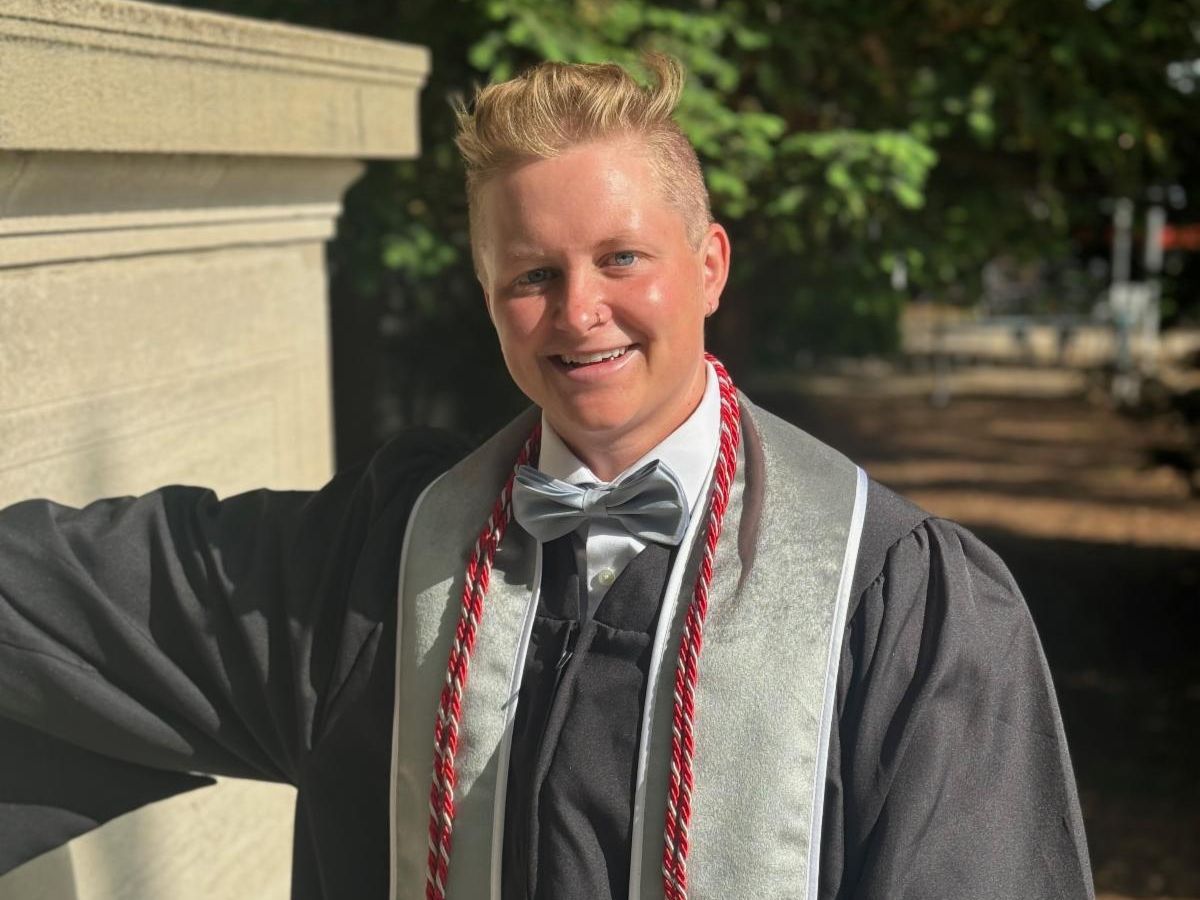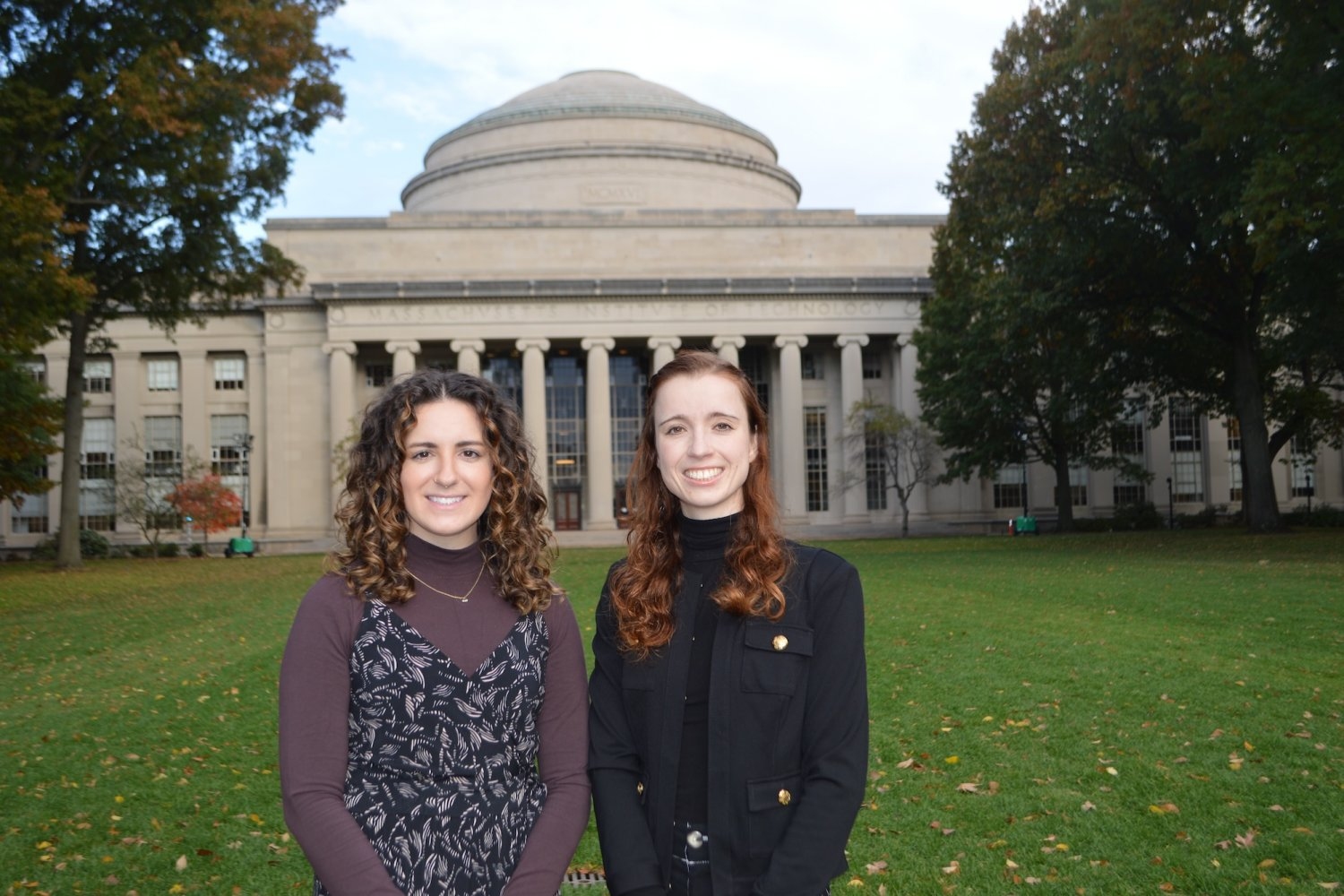MIT graduate student Sofie Stribos aims to build resilient infrastructure

While exploring her hometown of Brussels and on family trips through Europe, graduate student Sofie Stribos developed a fascination with the architecture that surrounded her. “I was always the one looking around at the buildings,” she says. “I knew how to navigate the cities just because of them.”
Eventually, her interest began to extend beyond design. She wanted to understand how structures were made and how each piece worked together.
Her research comes from a desire to design quality infrastructure that promotes sustainability and resiliency by maximizing its lifecycle, adapting to changing conditions, and eliminating social and environmental disparities. She wants to help transform communities and impact lives for the better. “Through engineering, you can make a change in someone’s life, or in a community,” she says.
As a Master of Engineering student in the Structural Mechanics and Design track, Stribos works in the Digital Structures Lab under the guidance of Caitlin Mueller, Associate Professor of Civil and Environmental Engineering and Architecture. Her research focuses on exploring new ways to improve the structural integrity of concrete without relying on steel rebar, which is commonly used in concrete structures. She develops a reinforced concrete structural model for optimized knitted formwork beams. This project aims to find ways to reduce construction and material costs while minimizing the environmental impact on the built environment for developing countries.
“The project was originally developed for use in India for affordable urban housing construction solutions. Material costs can constitute 60 to 80% of the total cost of residential construction in developing countries. Material cost is really expensive compared to the labor cost in these regions,” Stribos explains. Her research aims to address this issue with a fiber-based material that provides a cost-effective alternative in these regions.
“We’re still determining how much load these fiber-reinforced beams can hold, but the goal is to find a solution that’s not only cost-effective but also resilient and sustainable,” she says.
This focus on resilience is a recurring theme in her work. She is motivated by a desire to create infrastructure that can withstand the global challenges our planet faces, from economic constraints to climate change. “I want to provide a resilient and sustainable way of designing that will have an impact on communities and the environment. I want my research to help developing countries build infrastructure that lasts, that doesn’t just replicate what we’ve done here, but makes sense for their specific needs,” she says.
Originally from Brussels, Belgium, Stribos was recruited to play field hockey at the University Iowa, where she received a bachelor’s degree in civil engineering. The sport has always been a big part of her life—her parents met through field hockey and both of her sisters played at the University of Iowa as well. At Iowa, she won three Big Ten Championships and participated in five NCAA Tournaments as a starter for the Hawks.
Playing at a competitive level taught her skills that have transferred seamlessly into her academic career and research. “It was challenging, but it made me stronger, more mature, and better able to handle the demands of both sports and academics,” she reflects.
She credits her older siblings with influencing many of her decisions, from moving to the United States to applying to MIT. She recalls when her older sisters moved away to play field hockey at the University of Iowa, “seeing how hardworking, motivated, and passionate they were, not only about the program, but in everyday life, really inspired me.”
Her brother guided her throughout the process of applying to graduate school, reviewing her applications and giving advice when needed. “He pushed me to apply to MIT and made me have the confidence to actually do it.”
After completing her undergraduate degree, she worked at a company in Iowa City designing timber, steel, and concrete commercial structures under a licensed engineer and collaborated with architects, contractors, and various engineering disciplines. While the experience was valuable and expanded her technical engineering expertise, she found herself wanting to do more. “I wanted to provide more sustainable and resilient solutions to communities,” she says.
Applying to a graduate program at MIT felt like a natural next step to combine her technical skills and desire to create real world impact through her work. “I wanted to find solutions for the future, ensuring that the infrastructure we build today is sustainable and long lasting. This program offered the perfect combination to improve my technical skills and focus on sustainability.”
After graduating, Stibos hopes to find a job that allows her to impact communities and individuals for the better. Eventually, she is looking forward to leading her own engineering firm, where she can continue to push the boundaries of sustainable design and help shape the future of global infrastructure. For now, though, she is focused on making the most of her time at MIT, appreciating her walk to class and studying in the library. “I look forward to coming here every day. I’ll miss the environment and the people. Every day here is an opportunity to learn something new and grow as a person.”
Share on Bluesky


